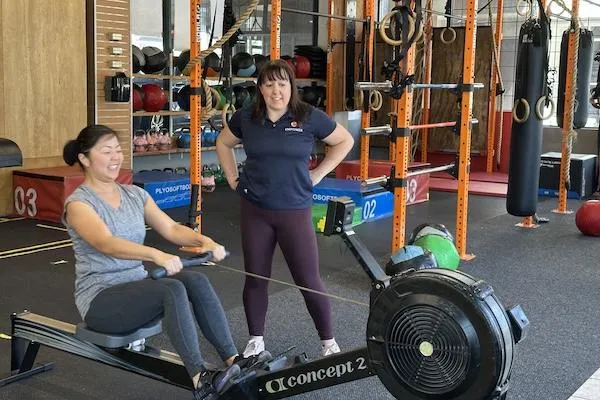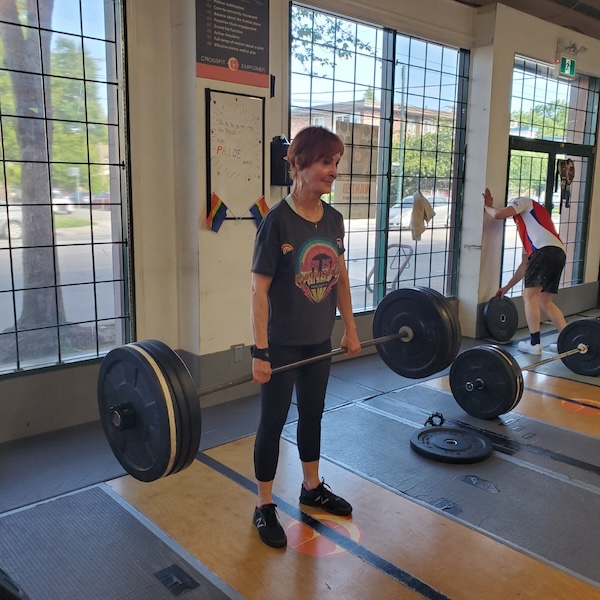
What Is Fitness? A CrossFitter’s Perspective from Level 1 Prep
This weekend, I’m heading into my CrossFit Level 1 Seminar—and I’ve been deep in study mode.
One concept the Level 1 Training Guide spends a lot of time on is deceptively simple: “What is fitness?”
At first, it seems like an easy question. You might say it’s about being strong, having endurance, or just “being in shape.” But once you really start to unpack those terms, you realize how vague they are. What does strong mean? What kind of endurance? Compared to who?
Greg Glassman, CrossFit’s founder, pointed out that despite the size and influence of the fitness industry, there was no universally accepted, working definition of fitness. No way to objectively say, “This person is fitter than that person.” It was often based on looks, arbitrary metrics, or specific sport performance.
CrossFit changed that.
A Definition of Fitness That’s Measurable
CrossFit defines fitness as:
“Increased work capacity across broad time and modal domains.”
It might sound a bit technical at first, but it’s surprisingly straightforward.
Work capacity is how much you can physically do—whether that’s lifting, running, jumping, biking, or even carrying groceries.
Time domains refers to your ability to perform across different durations—short bursts, sustained efforts, or long-haul work.
Modal domains just means all types of movement—strength, cardio, gymnastics, and more.
Put simply: Fitness is the ability to perform well at any physical task, no matter how long it lasts or what it is.
The Four Fitness Models
Glassman backs up this definition using four distinct models. Each provides a different lens for understanding and measuring fitness:
The 10 General Physical Skills – Cardiovascular endurance, stamina, strength, flexibility, power, speed, coordination, agility, balance, and accuracy. A fit person develops all of these.
The Hopper Model – Imagine pulling random physical tasks out of a hat. The more fit you are, the better you’ll perform across whatever comes up—expected or not.
The Metabolic Pathways – These refer to your body’s three main energy systems (short, medium, and long duration). A balanced fitness program trains all three.
The Sickness–Wellness–Fitness Continuum – This model views fitness as a buffer against illness. The fitter you are, the more resilience you have—and the further you are from sickness.
Personally, I love the Hopper Model. It reminds me why I started CrossFit in the first place: to be ready for anything. Whether it’s hiking at Whistler, helping my eldest child move into a new apartment, or kayaking in unexpectedly blustery conditions—I want to be capable (and not get blown out to sea!).
Tour de France: Unchained
This idea of preparing for “the known and the unknowable” hit home again while I was watching season three of Tour de France: Unchained on Netflix.
The series follows elite cycling teams through the world’s most grueling bike race. These athletes are incredible at what they do—but their bodies reflect a hyper-specialization. Powerful legs, yes—but their upper bodies are far less developed.
It made me wonder: how would they fare in the kinds of real-life tasks I mentioned above? Hiking? Probably great. Moving apartments? Maybe not so much. Kayaking in rough water? Likely not so good.
Their fitness is elite, but narrow. CrossFit aims for broad, general, and inclusive fitness—not just excelling in one domain, but being competent across many.
We’re Not Just Working Out—We’re Preparing for Life
Studying for my Level 1 Seminar has given me a deeper appreciation for what we do at Empower. I’ve always loved the variety and intensity of CrossFit, but now I understand the philosophy behind it: we’re training to be more capable humans.
Fitness, as defined by CrossFit, is measurable. It’s practical. And it’s something anyone can improve—regardless of where you're starting from.
If this topic interests you as much as it does me, I recommend checking out this discussion from the Best Hour of Their Day podcast:
And if you’re curious about Tour de France: Unchained, you can find it on Netflix.
The workout for Friday, July 18
H: 03-12 Warm up (9 min)
In standing position:
Arm circles, shoulder circles, knees and ankle circles
Lunge with upper body twist (front to back, elbow to sky)
Running in a circle:
Jogging, high-knees, butt kick, karaoke (one direction then the other), power skip
H: 12-15 Strategy and water break (5 min)
H: 15-35(45) WOD
10 200-meter sprints
Note down time used for each round.
Scheme suggestion:
Very confidence on cardio: E2MOM (every 2 min finish one 200 m sprint)
Not that insensitive running scheme: E3MOM (every 3 min finish one 200 m sprint)
The same scheme applies to other cardio equipment
H: 50 Cool down (5 min)

